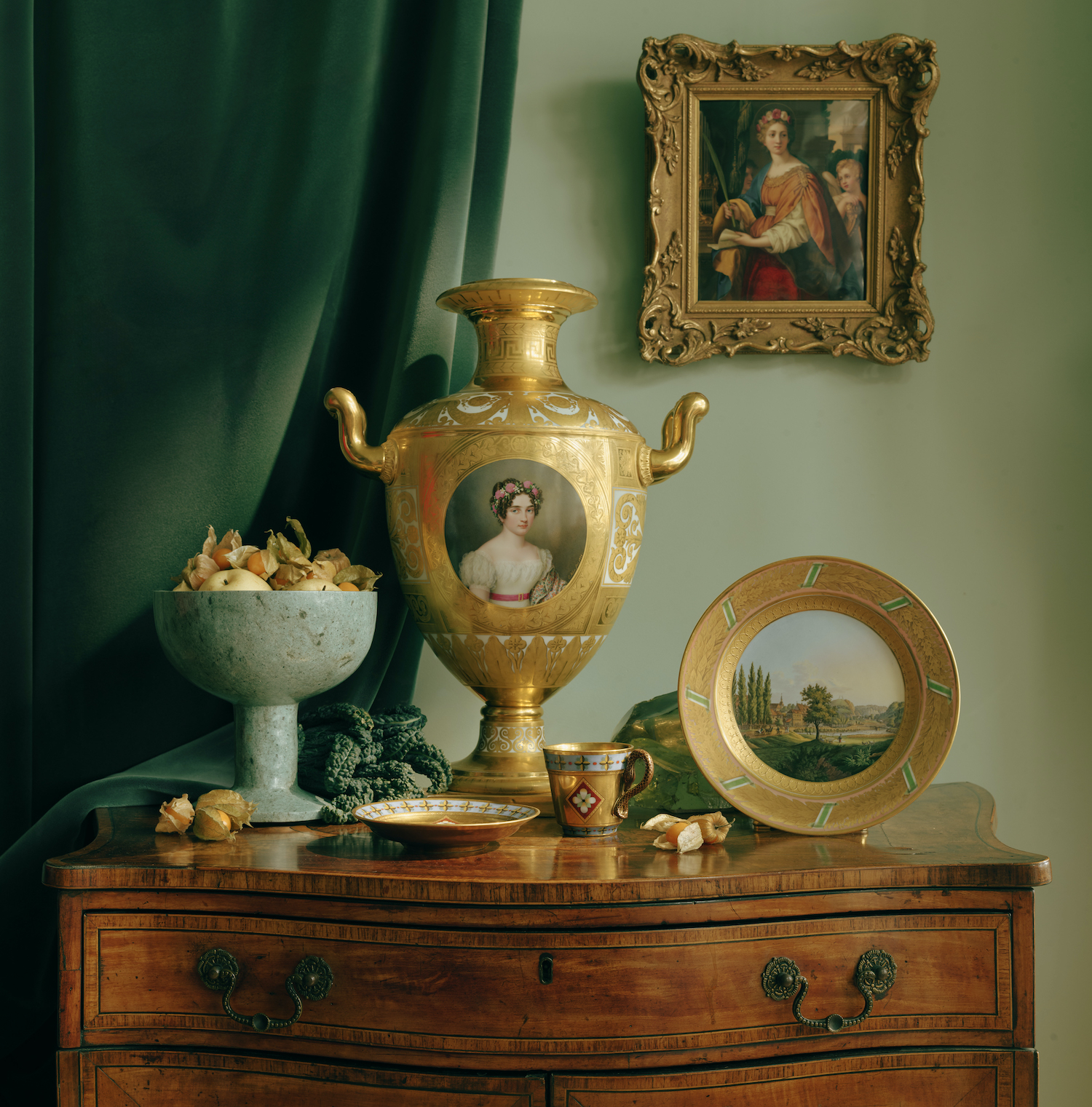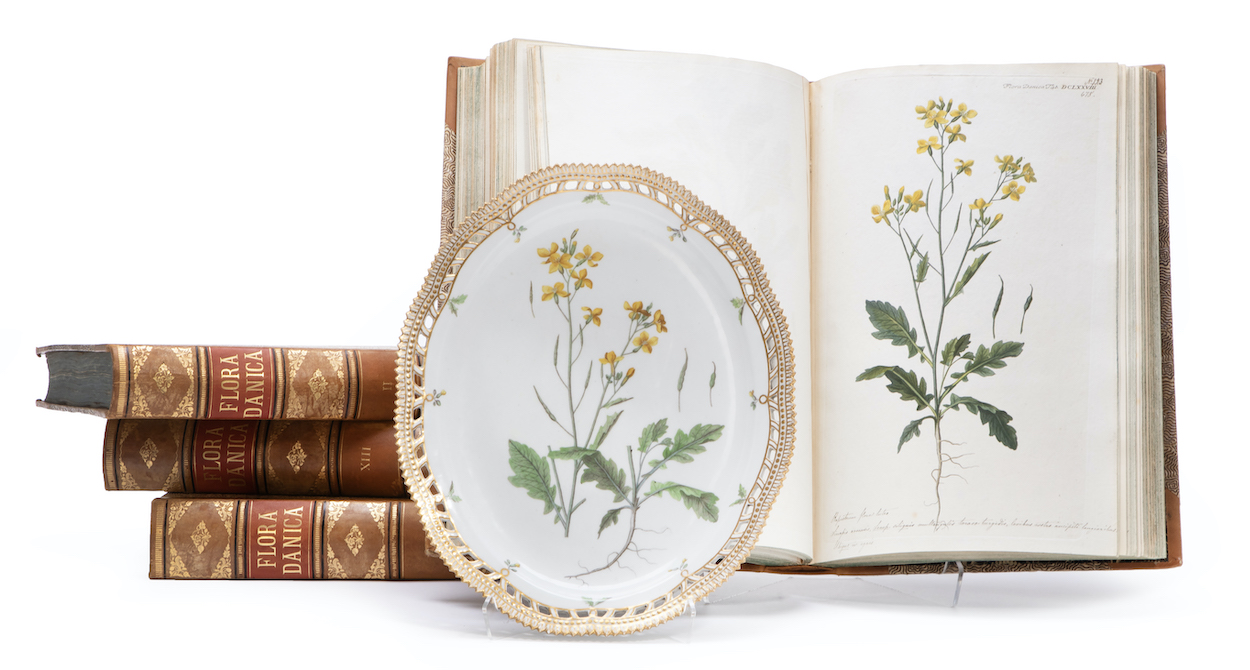The Twinight Collection in Bonhams’ sales

The fabled Twinight Collection of museum-quality fine porcelain assembled over 25 years by passionate collector, Richard Baron Cohen, will be offered in three auctions at salerooms in the Bonhams network.

Richard Baron Cohen began collecting fine porcelain when he saw an urn in an antique shop in New Orleans. It was the start of a passion that led to a collection of 7,000 pieces – and for 20 years, Baron Cohen estimated that he had acquired 1.4 pieces of porcelain, or a portrait miniature every other day for 20 years. His especial love was for 19th-century neo-classical porcelain that led him to hunt for examples around the world, and unusually from a variety of manufactories, rather than the traditional focus on a specific one. As he said in an interview with Lucinda Bredin, Editor of Bonhams Magazine, “It is the precision that appeals to me.”

Nette Megens, Director of Fine European Ceramics, said: “Richard Baron Cohen is a legendary figure – not just in the world of fine porcelain, but in the wider world of collecting. Richard has dedicated his life to finding the finest examples for his collection and so it is not surprising that the museum-quality Twinight Collection has been exhibited at places such as the Metropolitan Museum of Art. We are delighted that Richard chose Bonhams to offer his beloved collection in three sales that will undoubtedly prove the highlight of the season.”
500 Years of European Ceramics at Bonhams New Bond Street, London, July 4
The Twinight Collection – the world’s largest and most important collection of early 19th Century porcelain – includes superb examples of the finest and highest quality of European ceramics from the royal manufactories in Berlin, Vienna, and Sèvres. Leading the sale at Bonhams New Bond Street is a magnificent Nymphenburg portrait vase depicting Crown Princess Elisabeth of Prussia, by court painter Christian Adler, circa 1824 (estimate: £30,000-50,000). Made at the Nymphenburg porcelain factory in Munich in 1824, the vase depicts Elisabeth Ludovika, the eldest daughter of the king of Bavaria, the year before she had married the Crown Prince of Prussia (later King Friedrich Wilhelm IV). She is depicted wearing a wreath of roses (the flower of love) and myrtle, known as bridal flowers, as well as a symbol of beauty and youth. It was painted by Christian Adler and – most unusually for porcelain – is signed by him. The informal depiction suggests that this vase could have been intended for a member of the Prussian or Bavarian royal families. This vase – and the Twinight Collection as a whole – demonstrates that the best porcelain of the early 19th century combined technical and artistic perfection in a way that has never been surpassed.

Enamel Portrait Miniatures
The Twinight Collection is one of the foremost collections of enamel portraits from the 17th-19th century. Enamel portraits performed a wide variety of functions; some celebrated historical figures, while others commemorated a departed relation. Enamel copies were often commissioned alongside an original portrait in oils. This provided a more intimate and portable version in a robust material, allowing the British aristocracy to bring their picture collection with them from their country seat to their London houses.
One example that embodies the criteria of exceptionalism that runs throughout the Twinight collection is an exceptional selection of enamel portrait miniatures by Henry Bone (1755-1834), one of the most celebrated English miniature painters. Already world-famous during his lifetime, Bone toured some of the grandest homes in the United Kingdom, attracting the royal patronage of George III, George IV and William IV. Together, these miniatures present an unparalleled insight into 18th and 19th century society.
Bruun Rasmussen, Lyngby, Copenhagen , The Twinight Collection – The Danish Sale, online until July 1
Several pieces of the original Flora Danica porcelain dinner service will feature in The Twinight Collection – The Danish Sale, online until 1 July. The service, commissioned and created between 1792 -1805, was intended for Empress Catherine the Great. The delicate modelling of the biscuit porcelain, the stylistic concept and painting of the motifs, alongside the ornate gilding is a showcase of the master craftsmen of the Royal Copenhagen manufacture. The floral motifs were painted after the original Flora Danica botanical encyclopaedia from the 18th century, a complete set of which, including supplements and comprising 18 volumes, is also included in the auction (estimate: DKK 300,000-400,000). Each flower painting on the porcelain is an accurate representation of the Danish flora of that time, mirroring the copper prints held in this historic encyclopaedia. One such example of the faithfulness of the craftsmanship is an oval porcelain dish with pierced borders depicting a Sinapis arvensis, a wild winter flower, known for its delicate yellow petals (estimate: DKK 60,000). The original service was used at state banquets until 1990 and remains linked to the Danish Royal Family today.

Never one to limit his interests, Richard Baron Cohen’s Twilight Collection also features pieces that span from the 17th-century enamel portraits to 20th-century Art Nouveau vases. The Danish Sale of the Twinight Collection will feature pieces by the Bing & Groendahl porcelain manufactory, as well as works by female artists, such as Effie Hegermann-Lindencrone and Fanny Garde who encapsulate the originality, exquisite lustre, and master craftsmanship of the Danish Art Nouveau.
Bonhams Skinner, Marlborough, US, European Furniture and Decorative Arts, including the Twinight Collection, online June 30 – July 11

The Richard Baron Cohen Twinight Collection has some 50 lots of gilt and bronzed basalt pieces by Wedgwood that will be offered in Bonhams Skinner’s European Furniture and Decorative Arts sale, including the Twinight Collection. Black basalt is a hard, dense, fine-grained stoneware, introduced by Wedgwood in 1768. Its rich black colour has been enhanced by a variety of decorative techniques through the years including the application of bas-reliefs. Around 1875, the use of bronzing and gilding was also added, probably revived after the introduction of Japanese bronzes at the London International Exhibition of 1862. This appeared to stimulate demand for European bronzes as well as for Wedgwood’s bronze-like black basalt. During the next 15-20 years, Wedgwood created both plain and ornamented basalt along with gilded and bronzed vases and tea wares. One fine example in The Twinight Collection is a pair of black basalt candlesticks (estimate: $2,000 – 3,000) modelled as figures of Pomona and Ceres, the Roman goddesses for fruitful abundance.

